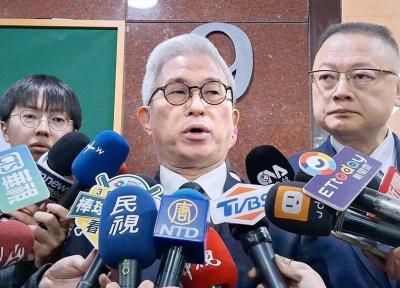The Taipei City Government yesterday inaugurated a historical and cultural museum called the Discovery Center of Taipei (
The museum promises to offer visitors a taste of the developments and vibrancy that made Taipei the city it is today.
The center shows different stages of Taipei's development, evolving from an old and isolated city that was far removed from its Chinese rulers almost 200 years ago, into a modern cosmopolitan center.
Taipei City Mayor Ma Ying-jeou (馬英九) presided over the inauguration of the museum, saying that museum was established to help residents understand the city's historical background better.
The four-floor museum features exhibits of antique gates, green parks and the city's transportation system. It also illustrates the city's growing international presence.
"Visitors feel like they are embarking on journey through time to see a virtual old Taipei -- a city that had many cultural and commercial activities around Menchia (艋舺) and Dadaocheng (大稻埕) along the Tamshui River," said Shirley Chen (陳雪莉), section chief of the city's Information Department that is in charge of managing the museum.
"The installation of the five antique city gates is another feature of the old Taipei. We have the northern, eastern, western and southern gates, as well as the smaller southern gate -- but usually a city would have only four gates," Chen said.
The center is situated in the renovated former Taipei City information center in the City Hall and is equipped with advanced interactive exhibition facilities.
One of the more interesting installations is an interactive map featuring Taipei in 1654. The map is designed with a touch-screen template that highlights the areas where native Taiwanese lived throughout the years.
Visitors can also experience the smells of old Taipei by sniffing exhibits of the lemon grass and camphor that used to be among the most popular trading products on the Tamshui River.
On the third floor is a gallery that exhibits Taipei's modern era, including the changing visage of the Hsinyi district, as it changed from rural rice paddies into the city center it is today -- in less than 20 years. Also included in the gallery are exhibits of the development of Chunghsiao East Road and Tunhua South Road, as well as a recreated part of Da-an Forest Park that lies next to Hsinsheng South Road.
The second floor of the museum features the city's ongoing activities and exhibitions, while the first floor exhibits daily scenes in Taipei and recordings of people's impression of the city.
The museum is situated at the right side of the main gate of the Taipei City Hall. It is open from 9am to 7pm from Monday to Friday. Admission is free and groups of more than 30 can ask for a tour guide.

Taiwan is to commence mass production of the Tien Kung (天弓, “Sky Bow”) III, IV and V missiles by the second quarter of this year if the legislature approves the government’s NT$1.25 trillion (US$39.78 billion) special defense budget, an official said yesterday. Commenting on condition of anonymity, a defense official with knowledge of the matter said that the advanced systems are expected to provide crucial capabilities against ballistic and cruise missiles for the proposed “T-Dome,” an advanced, multi-layered air defense network. The Tien Kung III is an air defense missile with a maximum interception altitude of 35km. The Tien Kung IV and V

The disruption of 941 flights in and out of Taiwan due to China’s large-scale military exercises was no accident, but rather the result of a “quasi-blockade” used to simulate creating the air and sea routes needed for an amphibious landing, a military expert said. The disruptions occurred on Tuesday and lasted about 10 hours as China conducted live-fire drills in the Taiwan Strait. The Civil Aviation Administration (CAA) said the exercises affected 857 international flights and 84 domestic flights, affecting more than 100,000 travelers. Su Tzu-yun (蘇紫雲), a research fellow at the government-sponsored Institute for National Defense and Security Research, said the air

A strong continental cold air mass is to bring pollutants to Taiwan from tomorrow, the Ministry of Environment said today, as it issued an “orange” air quality alert for most of the country. All of Taiwan except for Hualien and Taitung counties is to be under an “orange” air quality alert tomorrow, indicating air quality that is unhealthy for sensitive groups. In China, areas from Shandong to Shanghai have been enveloped in haze since Saturday, the ministry said in a news release. Yesterday, hourly concentrations of PM2.5 in these areas ranged from 65 to 160 micrograms per cubic meter (mg/m³), and pollutants were

Taiwan’s armed forces have established response protocols for a wide range of sudden contingencies, including the “Wan Chun Plan” to protect the head of state, the Ministry of Defense (MND) said today. After US President Donald Trump on Saturday launched a series of airstrikes in Venezuela and kidnapped Venezuelan President Nicolas Maduro, concerns have been raised as to whether China would launch a similar “decapitation strike” on Taiwan. The armed forces regularly coordinate with relevant agencies and practice drills to ensure preparedness for a wide range of scenarios, Vice Minister of National Defense Hsu Szu-chien (徐斯儉) told reporters before a